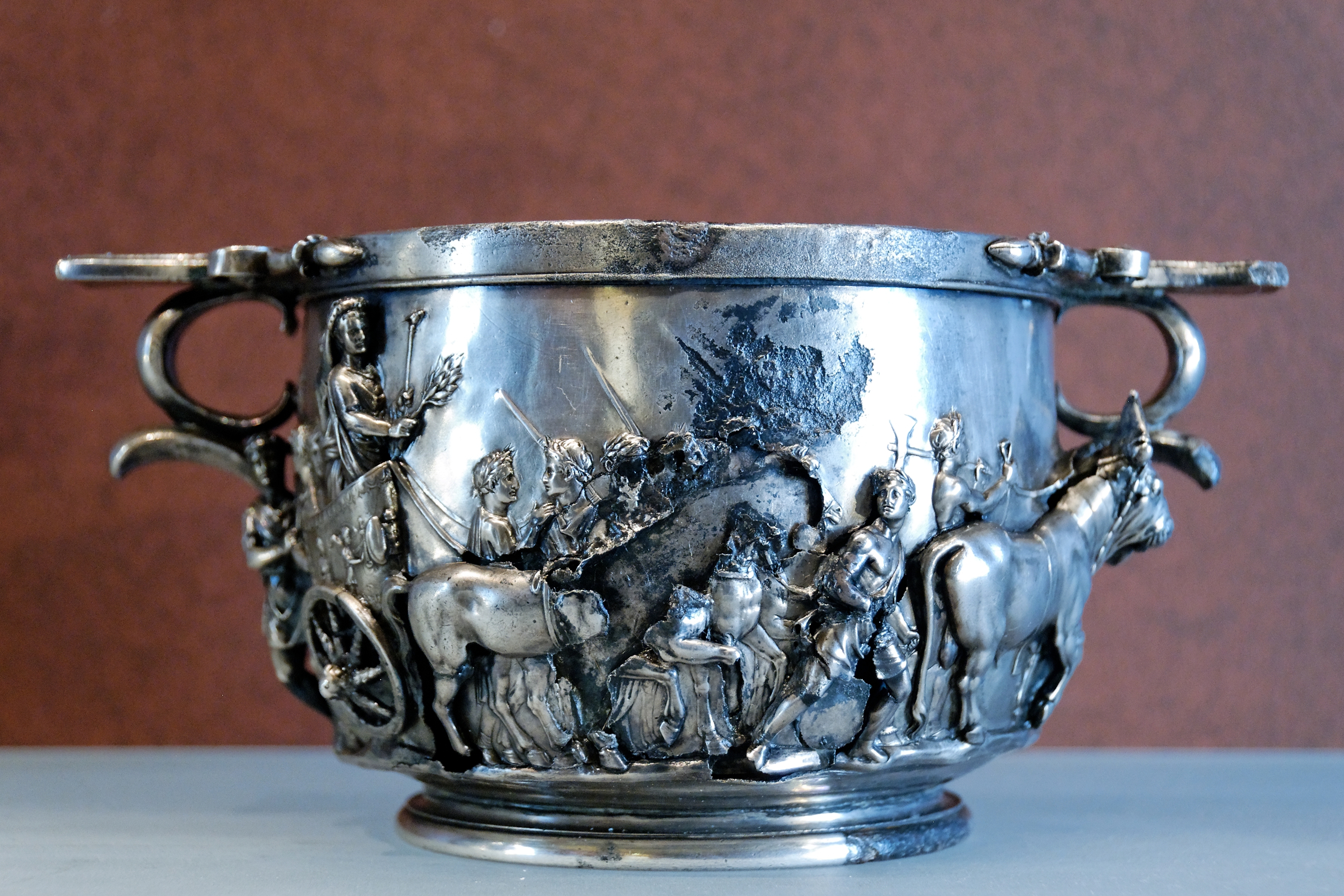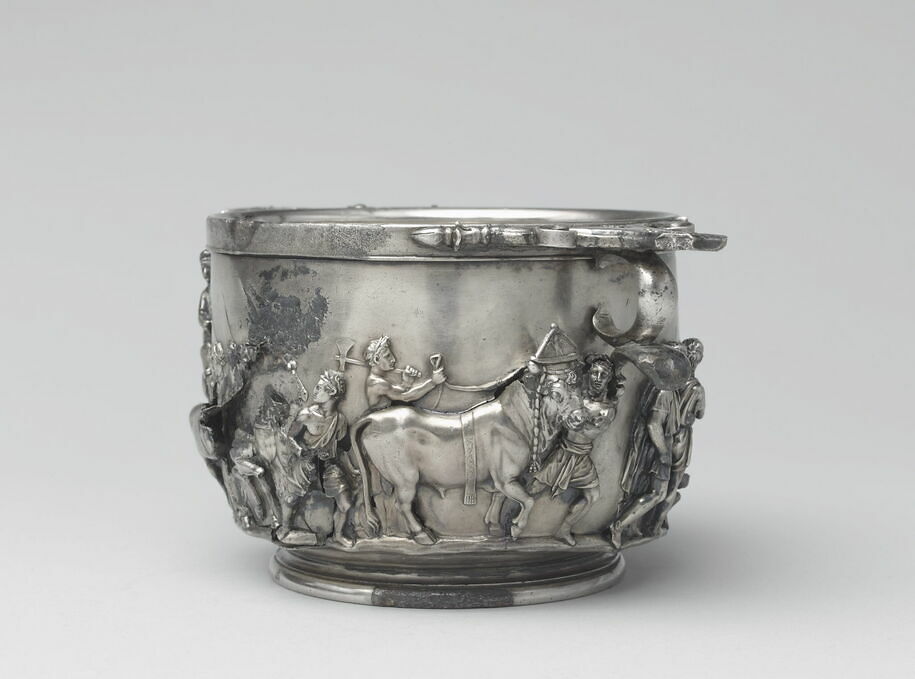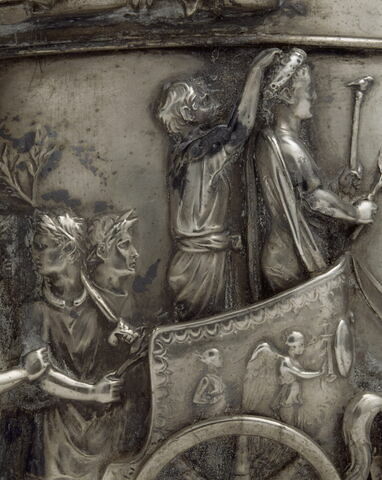The discovery of a silver scyphos, a two-handled drinking cup, near Pompeii offers a remarkable insight into the grandeur of ancient Roman society and its imperial symbolism. Buried by the catastrophic eruption of Mount Vesuvius in 79 AD, this artifact not only serves as a work of exquisite craftsmanship but also as a window into the world of Roman triumphs and the political rituals that shaped the rise of Emperor Tiberius.
Table of Contents
ToggleA Masterpiece of Roman Art and Imperial Propaganda
The silver scyphos, found in a villa that was tragically preserved under volcanic ash, depicts Tiberius in the midst of a triumphal parade in Rome. Such parades were key events in Roman culture, celebrating military victories and political power. The cup’s design intricately captures Tiberius, who would later become emperor, riding in a chariot drawn by horses. His attire—dressed in a toga—and his laurel branch in hand symbolize victory and honor, while the scepter topped with an eagle reflects his divine authority, as the eagle was considered the sacred bird of Jupiter, the king of the gods in Roman religion. This depiction emphasizes Tiberius’ connection to divine favor and imperial authority, reinforcing his image as a powerful and god-like figure.

The Triumph and Divine Authority
The image of Tiberius riding in the chariot is more than just a depiction of an imperial procession; it is a symbolic narrative of Roman triumph. Roman triumphs were public celebrations where victorious generals or emperors were honored, often being treated as gods in the eyes of the people. The victory wreath placed on Tiberius’ head by a slave symbolizes the honor and divine favor bestowed upon him. These ceremonies played a crucial role in maintaining the political and social order in the Roman Empire, and Tiberius’ inclusion in such rituals is a testament to his political importance.
The Reverse Side: A Sacred Sacrifice to Jupiter
On the reverse side of the scyphos, Tiberius is depicted performing a bull sacrifice in front of the god Jupiter. Sacrifices were an essential part of Roman religion and public life, used to gain the gods’ favor and ensure divine protection for the emperor and the empire. The bull sacrifice symbolizes not only religious devotion but also Tiberius’ role as a priestly figure—emperors were often seen as high priests, responsible for maintaining divine favor and ensuring the prosperity of Rome. This religious imagery reinforces Tiberius’ authority as not just a political ruler but as a divine intermediary between the gods and the Roman people.

A Rare Glimpse into Roman Ceremonial Life
This silver scyphos is not only a stunning example of Roman artistic craftsmanship but also a powerful symbol of the ceremonial and religious practices that surrounded the rise of the emperor in ancient Rome. It offers us an intimate look into the public life and rituals of the time, highlighting the emperor’s role in both military victories and religious ceremonies. This artifact serves as a crucial historical record, offering insights into the propaganda and imperial culture that underpinned the rule of Tiberius, one of Rome’s most influential emperors.

Conclusion: A Key Artifact in Understanding Roman Power
The silver scyphos discovered near Pompeii is more than just a cup; it is a piece of history that sheds light on the rituals, symbols of power, and the political propaganda that defined the reign of Tiberius. It provides a fascinating snapshot of Roman society, where military success, divine favor, and public ceremonies intersected to elevate emperors to a god-like status. By studying such artifacts, we gain a deeper understanding of the cultural and political mechanisms that helped maintain the strength and unity of the Roman Empire.

